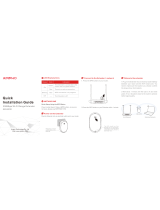Introduction ........................................................................ 4!
Product Overview .................................................................... 4!
What does the Range Extender actually do? ...................... 4!
Support for the 802.11ac wireless technology .................... 4!
Main features ....................................................................... 5!
Appearance ............................................................................. 5!
Connect the Extender to the Internet ................................ 7!
Before You Begin .................................................................... 7!
Where should I place my Range Extender? ........................ 7!
Safety Information ................................................................... 8!
Quick Setup ............................................................................ 8!
Setup Using the Mobile App ............................................... 8!
Setup Using a Computer ................................................... 10!
Manage the Range Extender ........................................... 14!
Manage via Web Interface .................................................... 14!
Changing admin account .................................................. 14!
Dashboard ......................................................................... 15!
Extending another Wi-Fi network ...................................... 16!
Extended Network Settings ............................................... 17!
Wi-Fi Access Control ......................................................... 18!
Changing the IP address ................................................... 20!
DHCP Server ...................................................................... 21!
Other Functions ..................................................................... 22!
Wireless Adapter ................................................................ 22!
Status LED Control ............................................................ 23!
Maintain the Range Extender .......................................... 24!
Firmware Upgrade ................................................................. 24!
Backup and Restore .............................................................. 25!
Factory Defaults .................................................................... 26!
System Log ............................................................................ 27!
Reboot ................................................................................... 28!
Log out .................................................................................. 28!
Appendix ......................................................................... 29!
Factory Defaults Settings ...................................................... 29!
Troubleshooting FAQs ........................................................... 30!
Specifications ........................................................................ 31!
Glossary ................................................................................. 31!




















